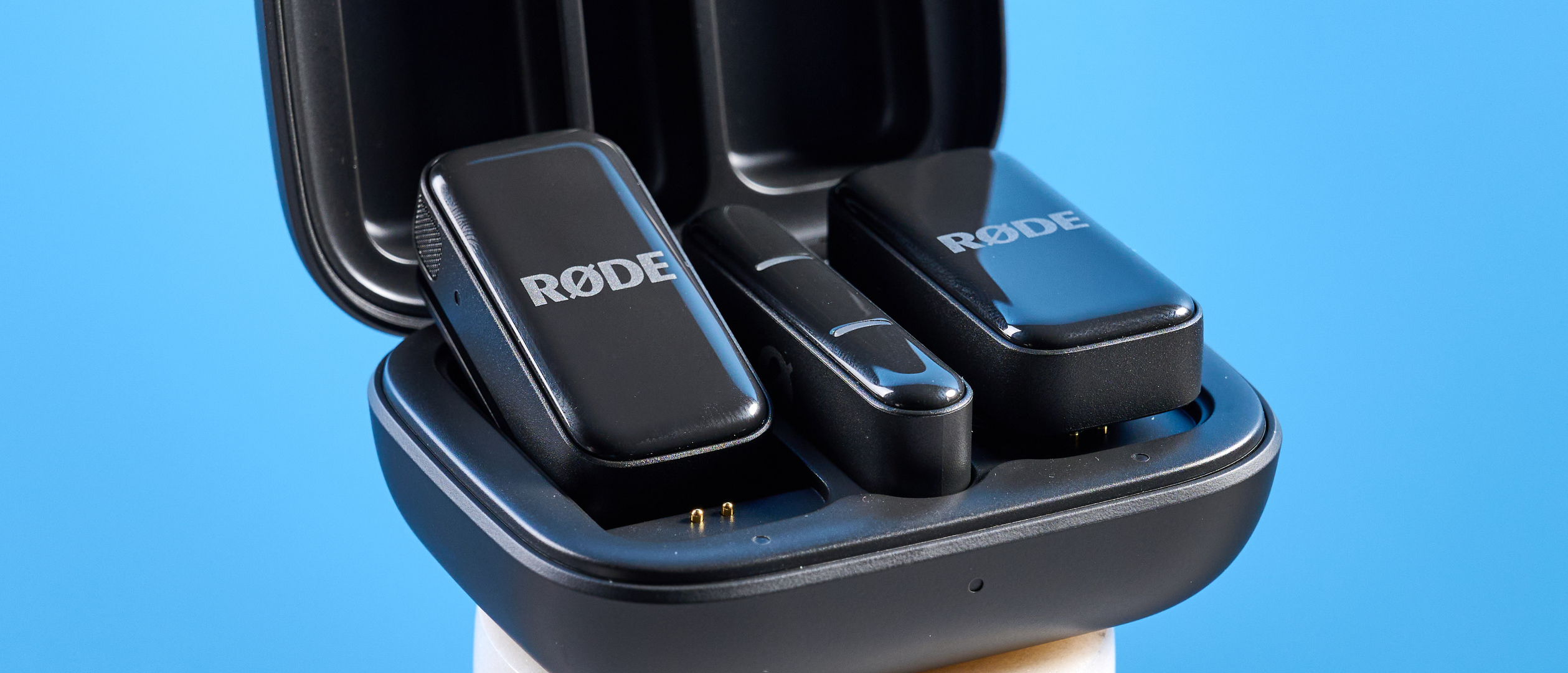Tom's Guide Verdict
The Rode Wireless Micro is probably the easiest way to level up your social media videos. It’s so easy to use straight out of the box, and thanks to its smartphone-first connectivity, you can record straight into your phone. On top of all that, the recording quality is top-notch for content creation.
Pros
- +
Beyond easy to use
- +
Audio quality great for content creators
- +
USB-C and Lightning options
- +
Auto gain, built-in pop filter and noise cancellation
Cons
- -
Audio quality might not cut it for videographers
- -
Noise cancellation is fine, but not amazing
Why you can trust Tom's Guide
The Rode Wireless Micro is a smartphone-first microphone that is so easy to use, I think my cat could give it a go. There’s no question about it: the Wireless Micro is intended for social content creators over traditional camera-forward videographers. As a result, it prioritizes portability and ease of use, both of which are integral for social media creators.
So, is that enough to make it one of the best microphones? I think if you’re after the easiest microphone in the world, then yeah, sure. The audio quality might not cut it for professionals, but, then again, it’s just $150.
For $150, this is an excellent set of wireless mics, and I have no doubt that it would instantly level-up your social media prowess. I’ll get into all the gnarly details in this Rode Wireless Micro review.
Rode Wireless Micro microphone review: Cheat Sheet
- What is it? A wireless microphone with two transmitters and a USB-C/Lightning receiver
- Who is it for? Social media creators
- What does it cost? $149 / £139
- What do we like? The sound quality is great for social media stars, and it’s beyond easy to use
- What don’t we like? Probably not adept enough for professional videographers — but then again, it’s just $150
Rode Wireless Micro microphone review: Specs
Rode Wireless Micro microphone review: Price & availability
The Rode Wireless Micro is $149 from Amazon U.S. and £139 on Amazon U.K., but it’s often on sale for around $15/£20 off. While this isn’t massively cheap for a set of wireless mics, for the quality, I’d say this is a very reasonable price.
The DJI Mic Mini is $149 for a receiver and two transmitters, which is the exact same price as the Rode Wireless Micro for the same number of RXs and TXs. The more professional-focused DJI Mic 2 is $349, and the Rode offering Wireless Pro is $399. If you need something with a higher bitrate, then I’d recommend the Rode Wireless Pro over the Wireless Micro.
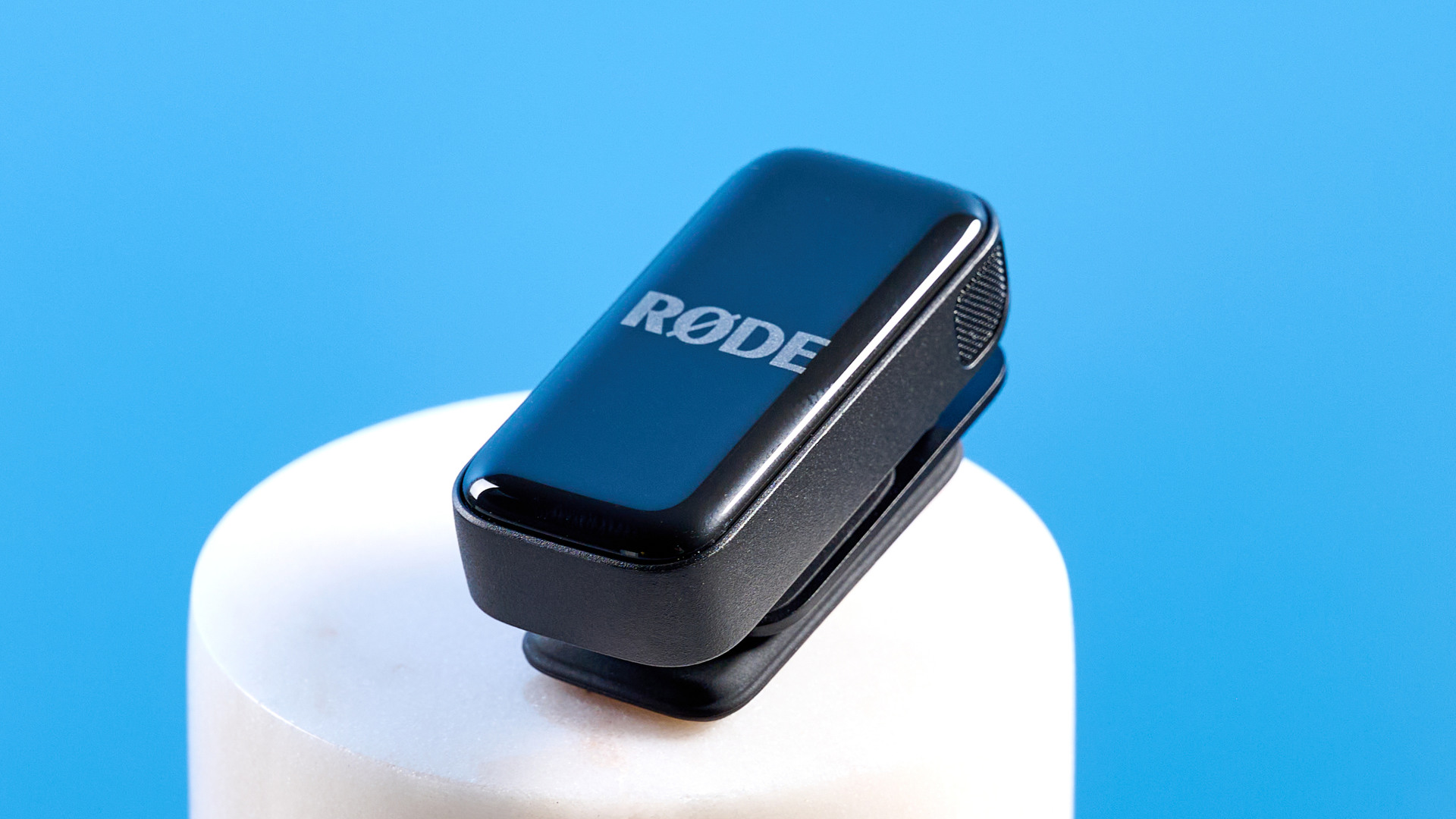
Actually, we use the Rode Wireless Pro in our ‘Buy or Skip’ videos — an example of which you can find in this Ultenic U12 vacuum cleaner review — which are just proof of how excellent this microphone is.
Even so, if you’re more of a casual content creator looking for a quick and easy way to upgrade your social videos, then I think the Wireless Micro is a fantastic choice.
Get instant access to breaking news, the hottest reviews, great deals and helpful tips.
Rode Wireless Micro microphone review: Design & controls
- Tiny charging case, just 2.7 inches
- No on-mic controls
- Perfect settings out of the box
Now, if you want a wireless microphone that requires no setting up, then the Wireless Micro is for you. I was able to get recording the second I unboxed this mic. Think about the easiest microphone you’ve ever used, and then make it about 10% easier. That’s the Rode Wireless Micro.
The charging case is just 2.7 inches across — small enough to fit in my palm. It looks like an earbuds charging case, and has a soft-close clamshell-like lid. The case feels quite sturdy, too, and I’d have no doubts about throwing this into my recording bag willy-nilly.
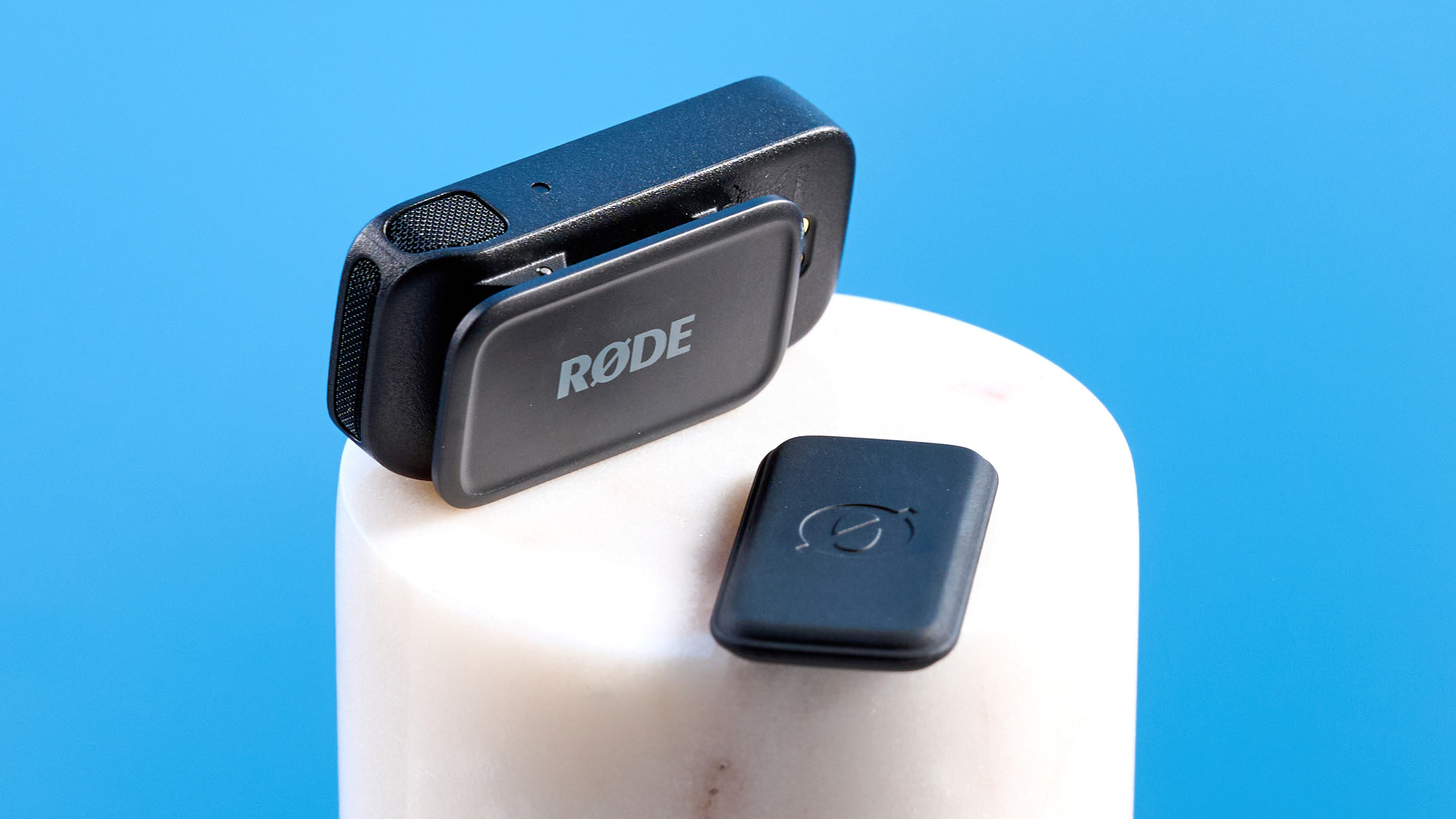
The two transmitters and the receiver fit snugly into the charging case and snap into place thanks to the magnetic charging pins. The magnetic clips slot underneath the TXs, and I’d recommend keeping them attached to the transmitters as they seem very easy to lose between uses.
The windshields (AKA dead cat) don’t fit in the charging case, which is a little bizarre. This is the only issue I have with the Wireless Micro. I’d recommend getting a little pouch to store the windshields between use, otherwise they might get lost.
As for the transmitter microphones, they’re omnidirectional mics, which means they pick up sounds from all around. If they’re clipped to collars or simply held, they’ll be able to capture voices. The mics are condenser microphones, so they will perform well in noisier environments.
Rode Wireless Micro microphone review: Features & connectivity
- Connects instantly via USB-C or Lightning RX
- Built-in noise canceling and pop filter
- Minimal in-app features
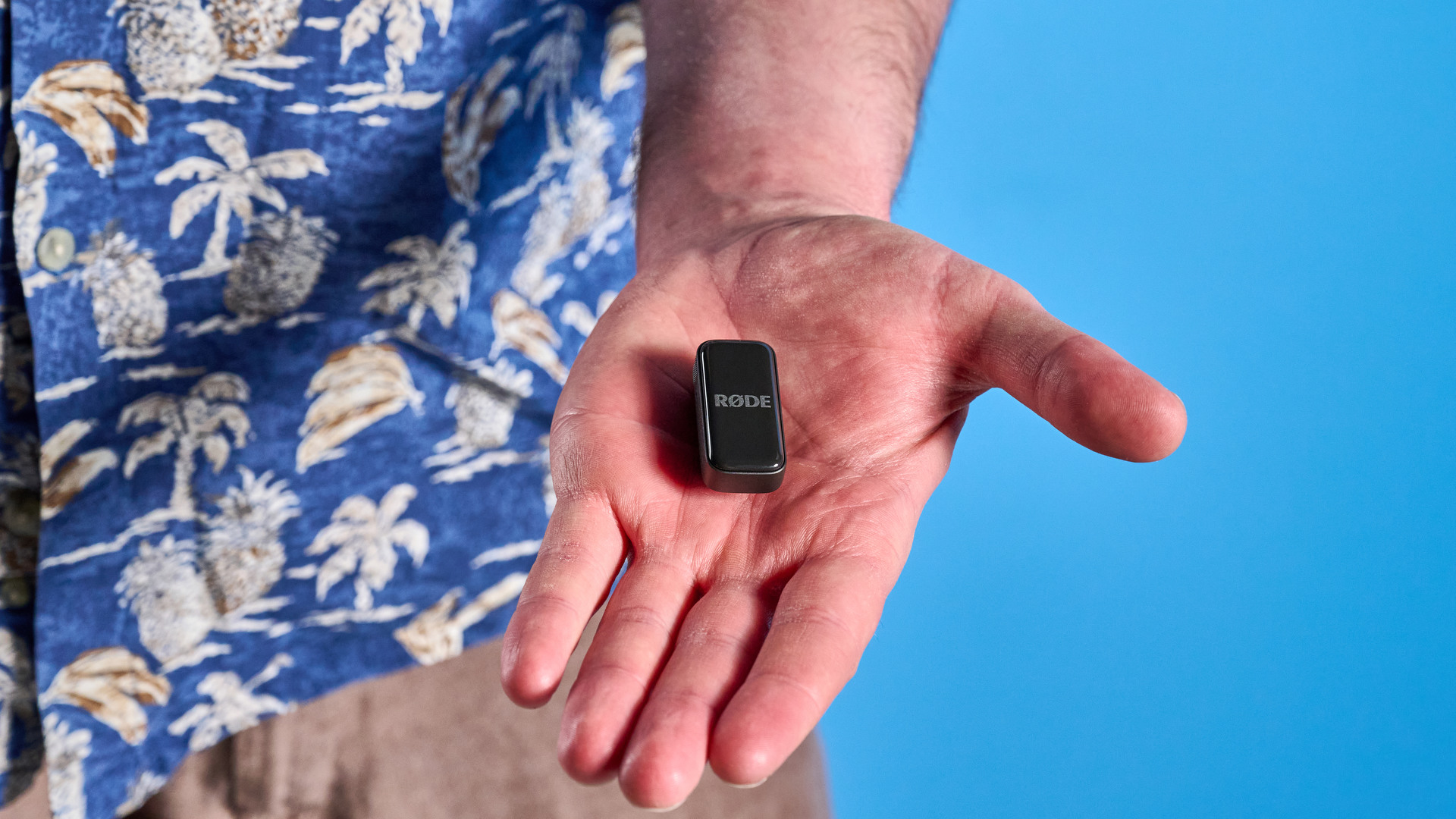
The Wireless Micro has a wireless range of up to 328 feet, which is around 500 feet less than the Wireless Pro, but 200 feet more than the Shure MoveMic 88+ ($449).
I was quite surprised to see minimal app features on the Rode Central app. Unlike the Shure Motiv Mix smartphone app, you can only update firmware and control stereo/mono recording in Rode Central. I’d perhaps like to see some more customization options in future, like vocal effects, noise canceling options, and manual gain.
The Wireless Micro mics have built-in gain adjustment, which I found worked well in testing, but I do think this should have a manual setting too for complex environments. Again, the Wireless Micro has built-in noise cancellation, but it would be more versatile if users could actually see and control this in-app.

As I’ll demonstrate in the ‘Audio quality’ section below, the noise cancellation is fine. It’s not phenomenal, but it’s not negligible, either. It would perform adequately for street content creators or casual content creators, but might not cut it for loud environments like festivals or music concerts.
Even so, the Wireless Micro would be a perfect first microphone for beginner content creators, or content creators who have yet to invest in a professional-sounding mic setup. The wireless micro is easy to use right out of the box.
It’s as easy as this: plug the USB-C/Lightning receiver into your phone and press record. The mics will automatically be the preferred input when you use your native recording app, and you can also record into Rode Capture. However, I’d recommend using your native camera as it’s just easier.
Rode Wireless Micro microphone review: App
- Rode Central app
- Rode Capture app
- Works without app
Although you don’t need either apps, Rode recommends you use the Wireless Micro with Rode Central and Rode Capture. I found both apps very easy to use, although nothing groundbreaking. User reviews on the App Store claim the app doesn’t recognize Rode microphones, but I didn’t experience any of this. The second I plugged in my USB-C receiver, the app recognized the mics.
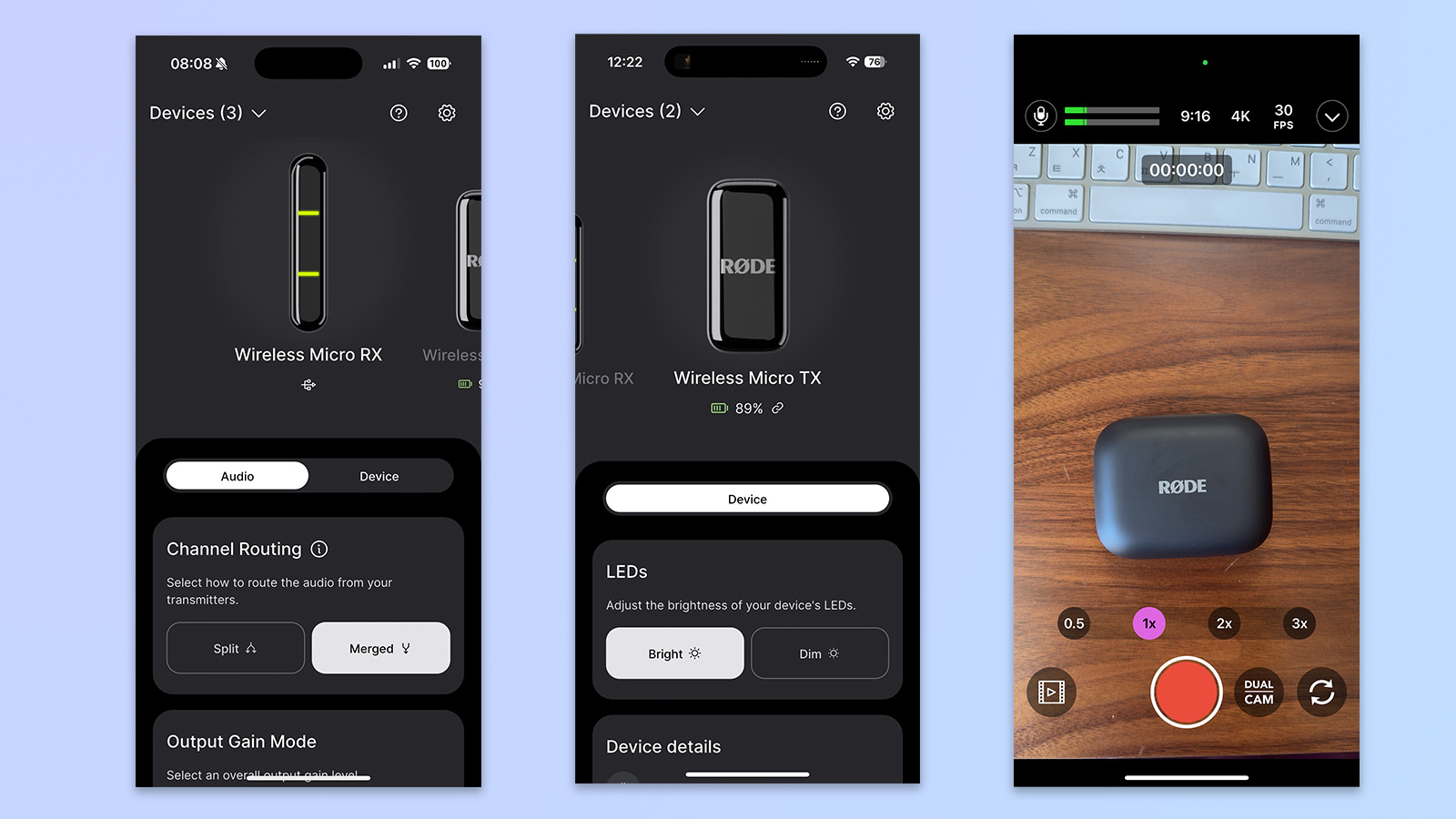
As you can see from the screenshots of the Rode Central (left) and Rode Capture (right) apps, the UI is very clean and has clear options for customization. As I mentioned earlier, there are minimal features in the app.
In Rode Central, all you can do is customize the gain and merge or separate the two transmitter channels. There are no further options like EQ, noise cancelation, or similar.
Rode Wireless Micro microphone review: Audio quality
- Clean, faithful Rode sound
- Minimal popping and hissing
- Auto gain
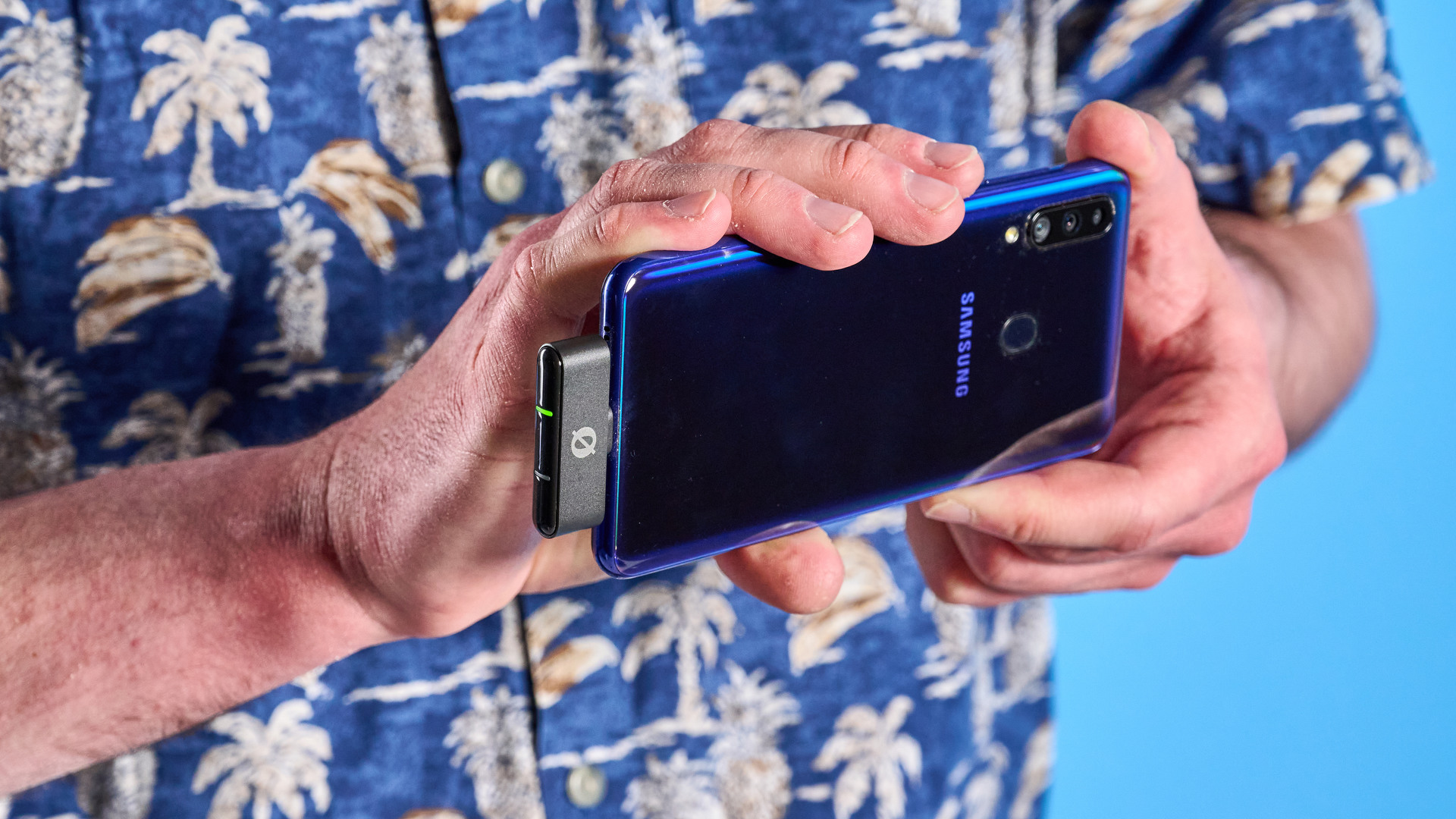
As with all microphones I test, I put the Rode Wireless Micro through a series of standardized audio tests. First, though, I’ll let you hear the sound quality right off the bat. Word of warning, though, this was recorded onto my iPhone 16 Pro in m4a. I then had to convert to MP3 to upload here, so it will have lost some quality. I promise it sounded better in editing than it does here.
My voice is clear, clean, and faithful to real life. While the audio quality isn’t phenomenal, there’s no reason why this wouldn’t be more than enough for YouTube, TikTok, and Instagram content.
Standardized audio testing
I put the Wireless Micro through a series of tests — plosive (pops), sibilant (s sounds), and noisy environments.
Plosives
Plosive sounds are basically ‘P’ and ‘B’ sounds — anything that might make a microphone ‘pop’. The Rode Wireless Micro has a built-in pop filter.
I think the Wireless Micro did a really good job of minimizing the ‘P’ and ‘B’ pops here. Of course it’s not as adept as a broadcast-quality microphone — but that’s like comparing apples and oranges. They’re completely different products with completely different intended uses.
For social content creation, I think this is a very reliable pop filter and would perform well.
Fricatives/sibilance
Fricative sounds refer to soft, airy sounds like ‘F’ and ‘V’. Sibilance refers to hissy ‘S’ sounds, which can be quite unpleasant to listen to.
As you can tell from the audio clip above, the Wireless Micro, again, performed exceptionally well at mitigating harsh ‘S’ sounds. The repeated sibilance in the clip is soft and controlled. Again, I think this microphone would perform well, even with the most inexperienced users.
Ambient noise performance
Considering this is intended more as an out-and-about microphone than a static, treated room microphone, it’s imperative that the Wireless Micro has decent ambient noise cancelation.
As I lamented earlier, this noise cancellation is unfortunately not configurable in the Rode Central app. It’s simply built into the microphone itself.
Listen to this clip.
As you can tell from the MP3 above, the noise cancelation is fine. By no means is the ambient noise silent, but, also, my voice is still front and center of the recording. I recorded a few clips of me on the street next to an electric saw, and the microphone still picked up my voice more than the noisy environment.
While it’s not Shure’s ‘Denoiser’ (available on the MV7 broadcast-mic range) level of profound, the ambient noise reduction is still good enough to protect your recordings in noisy situations.
Interview
I recorded this fake interview with the ‘Merged’ sound, as configured in the Rode Central app. As you can hear from the clip below, the Wireless Micro does a fantastic job of minimizing hisses and pops.
As you can hear, my interviewee doesn’t have the best microphone etiquette. But, then again, most interviewees might not have much microphone experience and be unsure how to speak into one. In that case, I’d be confident that the Wireless Micro would tame even the wildest speakers.
Rode Wireless Micro microphone review: Verdict
The Rode Wireless Micro is probably the easiest wireless mic I’ve ever used. Easier than the Shure MoveMic 88+ (although that has better sound quality), and much easier than the Sennheiser Profile Wireless (with comparable sound quality). There’s no fiddling with Bluetooth or trying to figure out why your TXs aren’t working. The microphone just works, right out of the box.
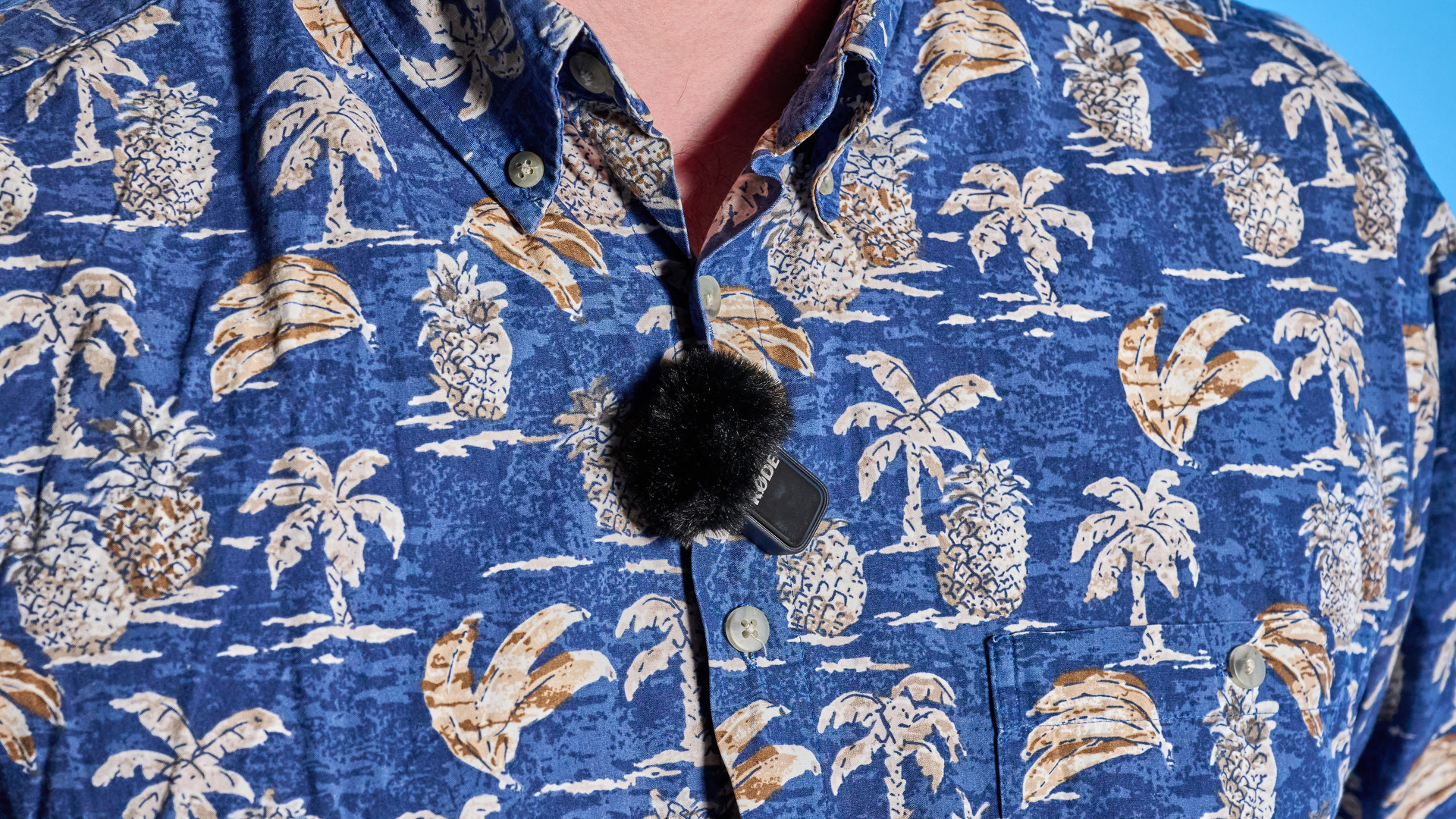
Thanks to the smartphone-first connectivity, I was able to get recording via my iPhone’s camera in seconds. Whether you’re recording voiceovers for TikTok or street interviews for Instagram, these mics won’t let you down.
While, no, I don’t think the audio quality quite cuts it for professional content, the Wireless Micro is just $150, making it an ideal option for a first hi-res mic upgrade. For newbies, there’s really nothing better.

Erin Bashford is a senior writer at Tom's Guide, focusing on reviews. She has a Masters in Broadcast and Digital Journalism from the University of East Anglia. As an ex-barista, she knows her way around a coffee machine, and as a music lover, she's constantly chipping away at her dream of having a multi-room home sound system. In her spare time you can find her reading, practising yoga, writing, or stressing over today’s NYT Games.
You must confirm your public display name before commenting
Please logout and then login again, you will then be prompted to enter your display name.
